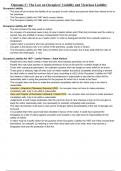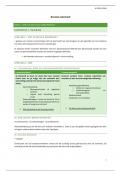Other
Pearson BTEC Applied Law Unit 7 Outcome C
- Module
- Unit 7 - Aspects of Tort
- Institution
- PEARSON (PEARSON)
Pearson BTEC Applied Law Unit 7 Outcome C Unit 7 - Aspects of Tort Outcome C - Investigate the law on occupiers' liability and vicarious liability.
[Show more]





